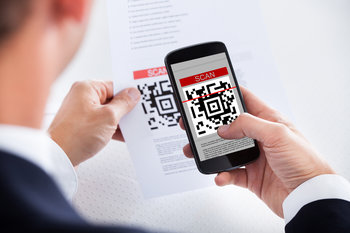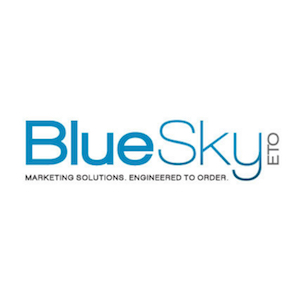The modern-day hotel industry is ultracompetitive and ever-changing. U.S. hotel bookings in 2019 were over $185 billion, and that number is on the rise. It’s a thriving industry. Yet hotel guests are expecting more for their money than ever before. If you don’t give them what they want, they’ll find another hotel that will. That’s what makes it so competitive, and it could leave you at a crossroads with your hotel marketing strategy.
How do you give your guests what they need? You want to do all the digital marketing things, but you’ve heard direct mail is still a very effective marketing channel. Where should you direct your focus? Believe it or not, there’s an easy answer. When you’re marketing your hotel, you don’t have to settle for digital or direct because the two work so well as a team. A cross-media marketing approach produces a 25% (or higher) response rate than direct mail alone.
Here’s how to combine digital marketing with direct mail for your best multichannel hotel marketing results.
Hotel Marketing Means Understanding Your Guests

According to Hotel Technology News, the modern-day hotel guest wants:
- Biometric Fingerprint IDs. All-access swipe cards and (gasp) room keys are antiquated solutions to entering a hotel room these days. What about installing fingerprint readers on your entrances? That will really impress your patrons.
- “Smart” rooms. Everything these days is smart. Smartphones, smart TVs, and smartwatches come to mind immediately. What about a smart room? Yes! Hotel guests want a nanotechnological environment. Do you know your guests’ favorite color scheme, temperature, and lighting preferences? If you do, you can appeal to their senses and psyche.
- Hyper-personalization. Ahh, now we’re talking marketing. You can’t ignore the positive effects of personalization. It’s an effective marketing strategy. You can personalize everything from email blasts, landing pages, and direct mail campaigns to the way you arrange each of your hotel rooms.
Hilton recently introduced an amenity called Five Feet to Fitness. So much for trekking to the hotel gym. Now you can work out in the privacy of your own room. Hilton provides almost a dozen different fitness equipment and accessory options, like a LifeFitness bicycle, TRX workout system, guided exercise kiosk, and more. If you overdo it, there’s even some Biofreeze on hand to soothe those aching muscles.
Guest Data Basics: Don’t Underestimate Essential Information
If those amenities are out of reach for your hotel, scale back to a basic understanding of your guests’ needs. It’s better to know a little about your guests than nothing at all. For example, contact information, demographics, and the reason they’re staying with you are all important details. If a guest has visited before, you already know something about their booking frequency and/or travel patterns.
Let’s say Mr. Smith books a three-night business trip every month—like clockwork. He’s not an ideal candidate for a discounted offer, but you should consider ways to ensure he keeps coming back. Check to see if he’s part of your loyalty program. If not, speak to him about the benefits and make it easy for him to become a member. Also, if he makes the same requests each time, have those amenities or services in place in advance so he doesn’t need to ask for them each time.
What is Multichannel Marketing?

Multichannel vs. Omnichannel: Do You Have to Choose?
Before you can implement a multichannel (or omnichannel marketing) approach, it helps to know what they are—and aren’t. Multichannel is like omnichannel because you’re using a variety of marketing channels to communicate your message. But with omnichannel, all those channels are working together. So when something happens on one channel, it reflects precisely on the others. Here’s a quick example.
Disney is much more than a hotel, but let’s use the “Happiest Place on Earth” to illustrate omnichannel marketing at its best. You can plan your trip from their website, which works equally well on mobile as it does on desktop (as it should). After you’ve booked your trip, you’ll receive access to the My Disney Experience tool where you can plan your entire trip, including making hotel reservations. Once you’re at the park, Disney provides Magic Bands that are—for lack of a better term—magical. You can use yours to get into your hotel room, order food, even stash photos that are taken of you with Disney characters around the park.
You can use either multichannel or omnichannel marketing methods. It’s up to you, but your customers expect one or the other. In fact, almost 100% of consumers surveyed said they switch back and forth between their electronic devices on any given day. For instance, they want their smartphone to coordinate with their laptop. Plus, they want the direct mail piece you sent to refer to another marketing channel, like a landing page on your website or an offer at your hotel. How much will you love creating a cross-channel marketing strategy? Let’s count the ways!
Combine Direct Mail and Email for Better Results

Send Direct Mail to Email Nonresponders
The average open rate for emails in the travel industry is 20%, according to MailChimp’s findings. The average click rate (indicating that the recipient has an interest in your offer) is a meager 2.25%. That’s not to say that email’s an ineffective marketing medium, it’s just that people have become a bit jaded with it because they receive so much. The numbers vary greatly, but the average office worker receives about 120 emails every day. So you have to really grab their attention with an effective subject line and message. That’s why it’s a great idea to introduce some direct mail into the campaign if you don’t receive a response via email.
Follow Up a Direct Mail Campaign with Email
Picture this. You want to tell people about your new hotel, but you can’t start with email because you don’t have enough addresses to warrant a campaign. In other words, you don’t have a lot of email addresses to market to. This puts you in a position to leverage the power of direct mail. You can use it for your initial outreach. You can also direct your prospects to a landing page on your website via a PURL (more on that in a moment), then follow up with them using email—once they’ve volunteered their email address to you.
This is a great hotel marketing strategy, especially when you want to tell your local audience about all of your services. For instance, you may not get a lot of room reservations from locals, but you might attract them and local businesses to your restaurant, bar, or conference/event space.
Combine Direct Mail and Email in an Automated Campaign
Email drip campaigns help you to onboard new customers, nurture leads, and engage with prospective guests who sign up via your website. All in all, it’s an effective marketing strategy. The proof? Drip campaigns have an 80% higher open-and-click rate than single emails. But modern-day marketers are now incorporating direct mail into their automated sequences to set themselves apart from their competitors.
Think about it. If your hotel’s drip campaign looks and feels like all the others, you’re not going to stand out. If you add a direct mailing to the mix, you’ll show creativity and initiative. Note: If you adopt this strategy, make sure that both your email messages and your direct mailings feature the same graphic standards and brand voice. The last thing you want is brand confusion.
Use PURLs and QR Codes in Your Direct Mailings

A QR (quick response) code serves the same purpose. In fact, it eliminates the prospect from having to type in the URL. It’s more or less a graphical version of a PURL that’s scannable with a smartphone camera or reader. That’s why it’s a good idea to include both. The less work the customer has to do the better.
Hotel Marketing: A Multichannel Approach
Hotel marketing begins and ends with your guests. The more you know about them, the better you can serve their needs. In a highly competitive industry like hospitality, it helps to pay attention to the smallest details in order to win their loyalty. A multichannel marketing strategy that includes both digital and direct mail covers all your bases. But you’ll need a solid plan to make it work the way it was intended.
That’s where we come in. BlueSky ETO is your perfect hotel marketing multichannel partner. We can help you with all your digital marketing campaigns—from conception to delivery, including brand/digital asset management and marketing automation. Plus, we’ll coordinate all your direct mail needs with our sister company, MSP, an industry leader with more than 65 years of experience. When it comes to your hotel marketing efforts, don’t settle for digital or direct. Use both and trust your strategy to a proven provider in the hospitality industry. Contact a BlueSky representative to schedule a free consultation for your hotel today.
Hotel Marketing
Need Help with Your Hotel Marketing Strategy?
Fintech Marketing Strategy: 10 Ways to Build Your Financial Brand
Financial services marketing has traditionally been a somewhat bland business offering—at least as far as consumers are concerned. But that's exactly why modern-day marketing tactics have had to adapt—to meet people's ever-changing needs. Fintech answers that call in...
The Essential Guide to Car Dealership Marketing
For auto industry marketers, there have been some important changes to negotiate over the past year. COVID-19 caused a decrease in sales and changed car dealership marketing habits. But there's good news. As the world begins to "reopen," more people will be looking to...
Geo-Targeted Marketing: What is it and How Can it Help Your Brand?
Location, location, location. You may have heard this phrase from a realtor emphasizing the value of a house or building based on its whereabouts. But did you know it can also apply to your brand's marketing strategy? Geo-targeted marketing, aka location-based...








This is a very relevant subject not just in hotel but many other domains! I definitely see hyper -personalization becoming a huge trend!
Wow. This is a ton of really great and useful information! Can’t wait to implement it.
This is so helpful- people like to have modern conveniences and technology but they also like personal touches. It’s important to give guests the best of both.
I think that it’s quite tricky to do marketing for a hotel, these days when everything happens on booking. com . I think it’s all about creating a special bond with your customers. I have hotels that I book directly and which I follow on social media because they offered me an amazing experience whilst I was there.
These are great tips, using new technology in a hotel facilities will definitely help to increase the marketing sales of the hotel. I will share this with my friend who is also hotel employee.
This is really amazing! These are great hotel marketing tips
This is such great info, marketing is so helpful and always useful. These are so really great tips
This is a fantastic blog post. My soon to be brother-in-law (my boyfriend’s brother) is in the hotel business and I think this blog can help him. He started a side business selling coupon books for hotels (different types for different things) and has been modestly successful, but he thinks he isn’t doing something right as he believes he should have more sales. I will definitely tell him about this blog post. I don’t think he uses direct mail at all.
Really smart nexus between the traditional and the modern – and the individualized nature of it all! Great read.
This is really awesome!!! I think it would be very powerful to combine offline with online…Very insightful.